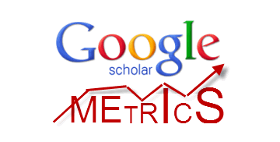Functions of the Editorial Team
Director
The Director exercises strategic leadership to ensure the academic and editorial excellence of the journal, guaranteeing compliance with the highest standards of quality and scientific integrity. They oversee the alignment of content with international indexing criteria and represent the journal before sponsoring institutions and indexing organizations. The Director leads the Editorial Committee, makes final decisions on the acceptance or rejection of manuscripts based on rigorous ethical and methodological criteria, and safeguards transparency in editorial processes. Additionally, they coordinate the publication of each issue, optimize the journal’s visibility in global databases, and manage its inclusion in the National Registry of Serial Publications, ensuring compliance with national and international regulations.
Executive Editor
The Executive Editor optimizes the clarity, coherence, and academic accuracy of manuscripts through in-depth editing that includes content restructuring, elimination of redundancies, and homogenization of editorial style. They update critical metadata for indexing, such as institutional affiliations and bilingual abstracts, and coordinate with specialized translators to ensure the quality of English versions. The Executive Editor selects and balances the articles for each issue, ensuring thematic diversity and scientific relevance. They oversee the workflow leading to layout and perform a final pre-publication review to guarantee formal and academic excellence.
Section Editor
The Section Editor leads the peer review process, assigning specialized reviewers and managing strict deadlines to maintain editorial efficiency. They supervise the quality of reviews, intervene in cases of academic discrepancy, and make editorial decisions based on scientific evidence. In collaboration with the Editorial Committee, the Section Editor ensures that manuscripts meet the declared requirements, including methodological rigor and contribution to the field of study. They manage communication protocols with authors and reviewers, ensuring clarity and professionalism in all interactions.
Copyeditor
The Copyeditor ensures linguistic and normative perfection of manuscripts by applying orthographic, grammatical, and stylistic corrections in accordance with the Vancouver Guidelines. They standardize specialized terminology, proper names, and institutional references, and verify the accessibility and verifiability of cited electronic sources. The Copyeditor updates bibliographic metadata in the editorial system to ensure accuracy in international databases.
Editorial Committee
The Editorial Committee plays a fundamental role in the initial evaluation of manuscripts, ensuring their coherence with high-impact scientific and editorial standards. They conduct a thorough review of metadata, including ORCID identifiers and accuracy of titles, abstracts, and keywords in both Spanish and English. They verify compliance with formatting standards, the academic structure of the document, and the suitability of illustrations and bibliographic references. The Committee ensures that references meet criteria of currency, source diversity, and predominance of accessible electronic resources, excluding historical works when applicable. They implement advanced plagiarism detection systems and issue detailed reports to guarantee the originality of content.
Layout Designer
The Layout Designer transforms manuscripts into editorial products of high visual and technical impact, aligned with institutional image standards and digital format requirements (PDF, XML). They ensure compatibility with platforms such as SciELO and indexing systems, perform galley proof tests to detect typographical or layout errors, and apply advanced tagging to optimize information retrieval in academic search engines.
Advisors
The Advisors provide specialized expertise in key thematic areas, evaluating the scientific soundness of manuscripts and advising the editorial team on complex methodological or disciplinary issues. Their contribution is essential to maintaining the academic rigor and relevance of the journal in its field.






